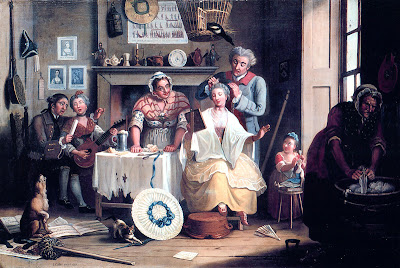The Place of Fabrics: Cotton
For the most part, descriptions of cotton clothing before the 1720s are in the context of travels to Asia and Africa. I was a little surprised to find that cotton was relatively common as a fine fabric from the 1720s, and something that poorer women could purchase second-hand. It became an affordable kerchief fabric by the 1740s, and the practice of wearing a light muslin gown over a colored silk petticoat can be documented by the late 1750s.


